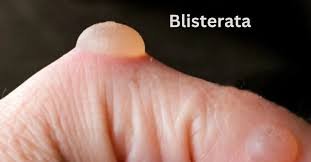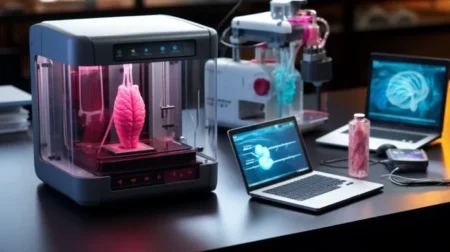Blisterata is a condition that can cause significant discomfort and pain due to its impact on the skin. Whether it manifests as blisters or sores, managing the associated pain and irritation is crucial for maintaining quality of life. In this article, we will explore various methods and strategies to soothe Blisterata pain quickly and effectively.
Understanding Blisterata

Before diving into pain relief strategies, it’s essential to understand what Blisterata is and how it affects the skin. Blisterata is characterized by the formation of blisters or sores on the skin, which can result from various causes including infections, autoimmune disorders, or other underlying health conditions. These blisters can cause pain, itching, and general discomfort, making it important to address the symptoms promptly.
Immediate Relief Strategies
1. Cool Compresses
One of the most immediate ways to soothe Blisterata pain is by applying cool compresses to the affected area. Using a clean, soft cloth soaked in cool water, gently place it over the blisters. This can help reduce inflammation, numb the pain, and provide relief from itching. Be sure to avoid using ice directly on the skin, as it can cause further irritation.
2. Over-the-Counter Pain Relief
Over-the-counter (OTC) pain relievers such as ibuprofen or acetaminophen can be effective in managing pain associated with Blisterata. These medications work by reducing inflammation and alleviating discomfort. It’s important to follow the dosage instructions on the package and consult with a healthcare provider if you have any concerns or underlying health conditions.
3. Topical Treatments
Applying topical treatments can provide localized relief from Blisterata pain. Look for products containing ingredients like lidocaine or benzocaine, which are designed to numb the skin and reduce pain. Additionally, anti-itch creams containing hydrocortisone can help alleviate itching and inflammation.
Long-Term Management Techniques
1. Proper Wound Care
For those experiencing Blisterata with open sores or blisters, proper wound care is essential to prevent infection and promote healing. Clean the affected area gently with mild soap and water, and apply an antibiotic ointment to prevent bacterial growth. Cover the area with a sterile bandage to protect it from further irritation.
2. Moisturization
Keeping the affected skin moisturized can help prevent dryness and cracking, which can exacerbate pain. Use a fragrance-free, hypoallergenic moisturizer to keep the skin hydrated. Applying moisturizer several times a day, especially after washing the area, can aid in the healing process and reduce discomfort.
3. Avoiding Irritants
Identifying and avoiding potential irritants is crucial for managing Blisterata pain. This includes avoiding harsh skin products, certain fabrics, or environmental factors that may trigger or worsen symptoms. Opt for soft, breathable clothing and gentle skin care products to minimize irritation.
Home Remedies
1. Aloe Vera
Aloe vera is well-known for its soothing and healing properties. Applying aloe vera gel to the affected area can provide relief from Blisterata pain. Aloe vera helps to moisturize the skin, reduce inflammation, and promote healing. Ensure that you use pure aloe vera gel without added fragrances or chemicals.
2. Oatmeal Baths
An oatmeal bath can be a soothing remedy for Blisterata. Adding colloidal oatmeal to a lukewarm bath can help alleviate itching and discomfort. Soak in the bath for 15-20 minutes, then gently pat the skin dry. Oatmeal has anti-inflammatory properties that can help calm irritated skin.
3. Honey
Honey is another natural remedy with anti-inflammatory and antimicrobial properties. Applying a thin layer of raw honey to the blisters can help reduce pain and promote healing. Honey can also act as a natural barrier against infection. Use organic honey and apply it to clean, dry skin.
Dietary Considerations
1. Anti-inflammatory Foods
Incorporating anti-inflammatory foods into your diet can support overall skin health and reduce inflammation associated with Blisterata. Foods rich in omega-3 fatty acids, such as fatty fish, flaxseeds, and walnuts, can help reduce inflammation. Additionally, fruits and vegetables high in antioxidants, like berries, spinach, and kale, can aid in skin repair and reduce discomfort.
2. Hydration
Staying hydrated is important for maintaining healthy skin and supporting the body’s natural healing processes. Drink plenty of water throughout the day to keep your skin hydrated and help flush out toxins. Proper hydration can also help manage Blisterata symptoms and reduce the risk of complications.
When to Seek Medical Attention
While many cases of Blisterata can be managed with home remedies and OTC treatments, it’s important to seek medical attention if symptoms persist or worsen. Consult a healthcare provider if you experience severe pain, signs of infection (such as increased redness, swelling, or pus), or if the blisters cover a large area of your body. A medical professional can provide a proper diagnosis and recommend more advanced treatment options if needed.
Preventive Measures

1. Skin Protection
Protecting your skin from potential irritants and injuries is key to preventing Blisterata from occurring or recurring. Use protective gear when engaging in activities that may cause friction or trauma to the skin. Additionally, practice good hygiene and avoid sharing personal items that may spread infections.
2. Regular Skin Checks
Perform regular skin checks to monitor any changes or symptoms that could indicate Blisterata or other skin conditions. Early detection and prompt treatment can help manage symptoms more effectively and prevent complications.
3. Stress Management
Stress can sometimes exacerbate skin conditions, including Blisterata. Implementing stress management techniques such as mindfulness, meditation, or regular exercise can contribute to overall well-being and potentially reduce the frequency or severity of symptoms.
FAQ’s
1. What is Blisterata and what causes it?
Blisterata is a skin condition characterized by the formation of blisters or sores, which can result from various causes including infections, autoimmune disorders, or other underlying health issues. It manifests as painful, itchy blisters that can affect different areas of the body. Understanding the underlying cause is crucial for effective management and treatment.
2. How can I relieve Blisterata pain immediately?
To provide immediate relief from Blisterata pain, applying cool compresses can be effective. Soak a clean cloth in cool water and gently place it on the affected area to reduce inflammation and numb the pain. Over-the-counter pain relievers like ibuprofen or acetaminophen can also help manage discomfort. Additionally, topical treatments containing lidocaine or benzocaine can provide localized pain relief.
3. Are there any natural remedies for Blisterata?
Yes, several natural remedies can help soothe Blisterata pain. Aloe vera gel, known for its soothing properties, can be applied directly to the blisters to reduce inflammation and discomfort. An oatmeal bath can also provide relief from itching and irritation, while honey’s anti-inflammatory properties can help promote healing when applied to the affected skin.
4. What should I do if the blisters become infected?
If the blisters become infected, characterized by increased redness, swelling, pus, or severe pain, it’s essential to seek medical attention promptly. Proper wound care, including cleaning the area with mild soap and water and applying an antibiotic ointment, can help prevent infection. If symptoms persist or worsen, consult a healthcare provider for a proper diagnosis and treatment.
5. How can I prevent Blisterata from recurring?
Preventing Blisterata involves protecting the skin from irritants and injuries. Use protective gear during activities that may cause friction or trauma to the skin, and maintain good hygiene. Regularly check your skin for any changes and avoid sharing personal items to reduce the risk of infections. Managing stress through techniques like mindfulness and exercise can also contribute to overall skin health.
Conclusion
Soothe Blisterata pain quickly and effectively by combining immediate relief strategies with long-term management techniques. From applying cool compresses and topical treatments to using natural remedies and maintaining a healthy diet, there are various ways to alleviate discomfort and promote healing. Always consult with a healthcare provider for personalized advice and treatment options, especially if you experience persistent or severe symptoms. By taking proactive steps to manage Blisterata, you can enhance your comfort and support the healing process.
Also Read: Top Features of Sowix Online for E-Commerce Success





